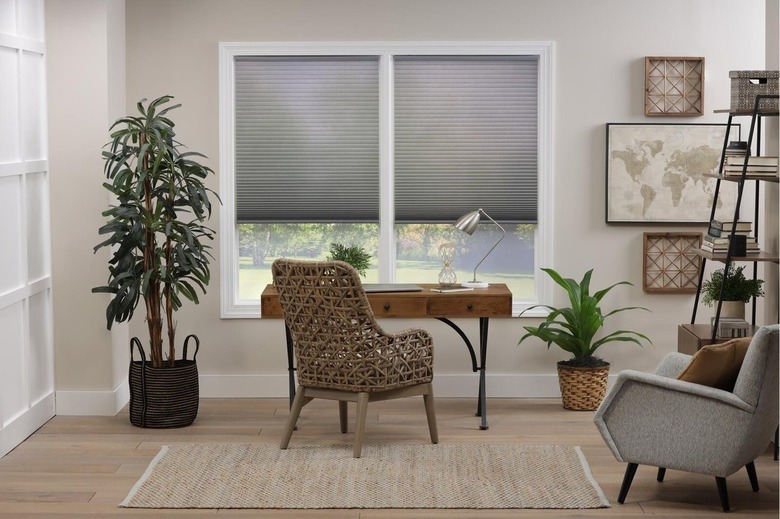How To Get Rid Of Mildew On Cellular Shades
We may receive a commission on purchases made from links.
Cellular shades are popular window treatments since the honeycomblike cells trap air and add a bit of insulation over your windows, but cellular shades are tricky to clean without causing damage. Cleaning your cellular shades regularly and keeping them dry can help prevent mildew. Once you spot mildew growth, spot-clean the shades quickly to keep it from spreading.
Causes of Mildew Growth
Causes of Mildew Growth
Mold and mildew spores are everywhere, but they don't start growing until they find the moisture and warmth required for them to multiply. One major cause of mildew on shades and blinds is condensation on windows, which can develop when it's cold outside and warm inside your home. Since cellular shades often sit inside the window frame close to the glass, they can soak up that moisture from the condensation. Closed shades also trap the condensation between the window and the fabric, which adds to the growth. Warm indoor air and heat from the sun help the mildew spores to grow.
Problems With Cleaning Cellular Shades
Problems With Cleaning Cellular Shades
Some window treatments can soak in water for easy cleaning and can handle rigorous scrubbing to remove dirt, mildew, and stains, but the construction of cellular shades means that getting them wet could damage them. They are often made of multiple layers of material that are glued together, and moisture in the seams can cause them to pull apart. Before you wash your cellular blinds, refer to the manual or check with the manufacturer to see if they can be submerged in water. If not, only use spot-cleaning methods on mildew patches.
Removing Mildew From Cellular Shades
Removing Mildew From Cellular Shades
Start by vacuuming or dusting the shades using a microfiber duster to remove dirt and loose debris. You can also use compressed air or a hair dryer on a heat-free setting to loosen and blow dust off the shades. Then, examine the shades to look for patches of mildew.
Spot-clean those mildew patches using a cloth dampened with warm water and a small amount of mild dish detergent. Blot the area instead of scrubbing it to prevent it from pilling or causing other damage. Never use bleach on cellular shades, as it can discolor the fabric and damage the material.
If the manual says that submerging your cellular blinds is safe, fill your bathtub with lukewarm water and mild detergent. Place the cellular blinds in the water and swish them around to help wash them. You can also dab at the mildew patches with a soft cloth. Rinse them well, let the water drain, and reinstall the shades when they're just damp so they can air dry. Mildew can be stubborn, so it might be necessary to replace the cellular shades if you can't remove the mildew gently with these cleaning methods.
Preventing Mildew on Cellular Shades
Preventing Mildew on Cellular Shades
Mildew can be difficult to remove from cellular shades and other window treatments, so prevention is ideal. Since moisture is a key factor, keeping your home's humidity under control is one of the best ways to prevent mildew growth. You can run a dehumidifier if you have humidity issues in your home. Increasing air circulation with ceiling fans and exhaust fans can also keep humidity under control.
If your windows frequently develop condensation, using caulk and weatherstripping on them can help reduce condensation. Adding insulation between the window frame and wall frame behind the window casing can also help. If you have older windows, it might be time to replace them with insulated windows to reduce condensation.
Regularly dusting or vacuuming your shades can also help. The dust that naturally builds up on the shades may promote mold and mildew growth, so keeping them clean can make it more difficult for mildew to grow.
